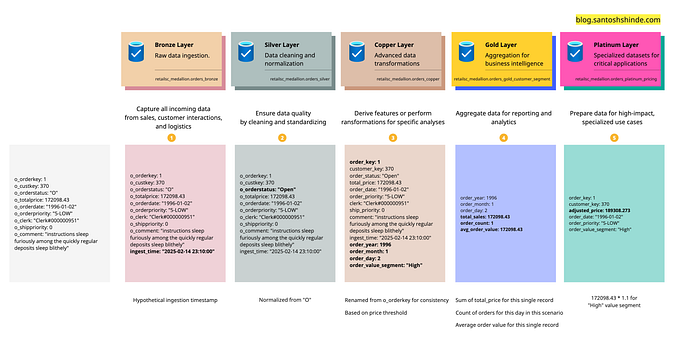Best Practices for Digital Product Lifecycle Management
Digital Product Lifecycle Management (PLM) refers to the strategic process of overseeing a product from its inception through development, growth, maturity, and eventual evolution or retirement. By integrating technology, businesses can streamline operations, optimize resources, and maximize profitability.

A robust Digital PLM strategy not only enhances decision-making but also improves customer experience, operational efficiency, and compliance with industry standards. Here are some best practices to help you manage your digital product lifecycle effectively:
1. Establish a Clear Product Strategy
A well-defined product strategy acts as a foundation for the entire lifecycle, ensuring alignment with business goals, customer needs, and market trends. A strong strategy provides direction, minimizes uncertainties, and ensures that all stakeholders work towards common objectives.
Key Components of a Product Strategy:
- Product Vision: Define what your product aims to achieve and how it will stand out in the market.
- Market Opportunity Plan: Identify gaps or opportunities in the market and determine how your product addresses them.
- Development Timeframes: Outline realistic timelines for product development milestones.
- Critical Requirements: Highlight essential elements like cost efficiency, performance improvements, or feature priorities.
By clearly articulating these components, teams can prioritize processes, allocate resources efficiently, and avoid unnecessary delays.
2. Regularly Review and Update Your Strategy
The digital world evolves rapidly, and static strategies are unlikely to succeed in the long run. Continuously revisiting and updating your product strategy ensures your product stays relevant amidst changing market dynamics.
Steps to Keep Your Strategy Current:
- Monitor Industry Trends: Stay updated on competitor actions, technological advancements, and customer preferences.
- Leverage Customer Feedback: Use insights from user feedback to identify pain points, improve features, and refine your offering.
- Conduct Market Research: Regularly analyze your target audience to discover emerging needs and opportunities.
- Track Key Metrics: Monitor product performance indicators such as engagement rates, retention levels, and customer satisfaction.
By adopting a proactive approach, you can identify potential challenges early and make necessary adjustments to stay ahead.
3. Develop a Comprehensive Project Plan
An effective PLM process requires a detailed project plan that outlines future milestones, assigns responsibilities, and sets realistic deadlines. This ensures clarity, accountability, and consistency throughout the product lifecycle.
Key Elements of a Project Plan:
- Milestones and Deadlines: Break down the lifecycle into manageable phases with clear deadlines.
- Roadmap Updates: Continuously refine your roadmap to align with the latest trends and customer expectations.
- Point of Contact: Assign individuals or teams responsible for addressing queries and overseeing implementation.
A structured project plan improves workflow efficiency and ensures that everyone involved understands their roles and responsibilities.
4. Empower Your Team with Training
Technology is a cornerstone of modern PLM, but its benefits can only be realized if your team is adequately trained. Educating employees about the tools and solutions involved is critical for successful implementation.
Tips for Effective Training:
- Leverage Multiple Formats: Combine classroom instruction, online training modules, and hands-on practice.
- Highlight Benefits: Explain how the new solution improves workflows and outcomes compared to existing systems.
- Focus on Collaboration: Ensure cross-functional teams understand their roles and how their contributions impact the overall lifecycle.
Proper training fosters efficiency, boosts team confidence, and reduces resistance to change, enabling smoother transitions and better outcomes.
5. Utilize Data-Driven Insights
Data analytics play a pivotal role in optimizing every stage of the digital product lifecycle. By collecting and analyzing data, businesses can make informed decisions, predict trends, and enhance product performance.
How to Leverage Data Effectively:
- Set KPIs: Define clear metrics to measure success across different stages of the lifecycle.
- Automate Reporting: Use analytics tools to generate real-time insights and simplify decision-making.
- Identify Patterns: Analyze historical data to predict future trends and adjust strategies accordingly.
- Integrate Feedback Loops: Ensure customer and market data feeds directly into product development and refinement processes.
A data-driven approach ensures that your product strategy is not based on guesswork but on actionable insights that drive results.
6. Adopt Scalable and Flexible Tools
The tools you choose for Digital PLM should align with your product’s complexity and growth trajectory. Scalable solutions can adapt to your needs as your product evolves, ensuring seamless operations and reduced downtime.
Characteristics of Ideal Tools:
- Integration Capabilities: Ensure compatibility with existing systems to avoid operational silos.
- User-Friendly Interface: Prioritize tools that are intuitive and easy to adopt for teams.
- Scalability: Opt for solutions that can accommodate growing product demands.
- Customizability: Look for tools that allow tailored workflows to meet specific business needs.
Investing in the right tools sets the foundation for a streamlined, efficient, and effective lifecycle management process.
7. Plan for End-of-Life Management
Every product reaches a point where it needs to be retired or transformed. Properly managing this phase can open up opportunities for innovation and customer retention.
Best Practices for End-of-Life Management:
- Communicate Transparently: Inform stakeholders, including customers, about the product’s retirement timeline and reasons.
- Repurpose Features: Identify components that can be integrated into new products or services.
- Learn from the Process: Conduct post-mortem analyses to gather insights for future product development.
A well-managed end-of-life phase ensures customer trust and lays the groundwork for future successes.
Conclusion
Digital Product Lifecycle Management is not a one-size-fits-all approach. It requires a blend of strategic planning, adaptability, and collaboration to navigate the complexities of the digital world. By following these best practices — from defining a clear strategy to leveraging data-driven insights — businesses can unlock the full potential of their products and drive sustained growth.
Adopting a proactive and holistic approach to PLM not only ensures operational efficiency but also creates meaningful customer experiences that foster long-term loyalty. Whether you are launching a new product or managing an existing portfolio, a well-executed PLM strategy is the key to staying competitive in today’s ever-changing digital ecosystem.








